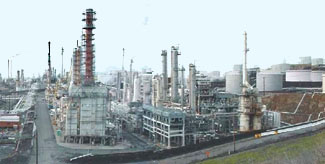Vibrio vulnificus
Articles that lack this notice, including many Eduzendium ones, welcome your collaboration! |
Classification
Higher order taxa
Bacteria; Proteobacteria; Gammaproteobacteria; Vbrionales; Vibrionaceae
Species
Vibrio vulnificus
Description and significance
Vibrio vulnificus is a rod-shaped, gram negative bacterium that ferments lactose. It is a halophile and can be found in warm coastal waters and is very common in the Gulf Coast environments. Vibrio vulnificus grows best in the warm months when the water temperature is between 20 to 24° C and cannot be found in cold water. It is also motile and like two other bacteria found in the Family Vibrionaceae, Vibrio cholerae and Vibrio parahaemolyticus, is a human pathogen. It is known to cause very serious problems and sometimes death in humans if it is ingested or if it contaminates an open wound in the skin. Strains of V. vulnificus can be divided in three biotypes; strains virulent for humans are categorized in biotypes 1 and 3 while strains that are virulent for fish are classified as biotype 2. Gene sequencing has allowed for the identification of the virulence genes in V. vulnificus and the ability to better the examination of an infection. It was first described as a pathogen in 1976 by Hollis et al.
Genome structure
The biotype 1 strain of Vibrio vulnificus has two circular chromosomes and a smaller plasmid. The larger of the two chromosomes is 3,354,505 bp long while the smaller chromosome is 1,857,073 bp long. The plasmid identified was of 48,508 bp. A super- integron containing 188 gene cassettes was also identified. These gene cassettes vary greatly for among the different strains and are distinctive for each Vibrio species. Genes that encode for capsular polysaccharide, RTX, toxins, and type IV pilus (all of which play an important role in the virulence of the strain) along with other genes can be found on the chromosome. Multiple rearrangements, gene duplications, and signs of horizontal transfer were also present on the genome.
Cell structure and metabolism
Describe any interesting features and/or cell structures; how it gains energy; what important molecules it produces.
Ecology
Marine environments and its inhabitants can serve as shelters for V. vulnificus. Organisms that harbor this bacterium include oysters, eels, shellfish and seaweed. When these organisms are consumed either raw or undercooked by humans it can cause great damage to the health of person and sometimes even death.
Pathology
Vibrio vulnificus can cause serious damage to human beings especially since its infectious dose is not known. It can enter the body if one consumes raw or undercooked seafood (especially oysters). In a healthy person, ingesting V. vulnificus can cause gastroenteritis which is characterized by diarrhea, vomiting, and stomach aches. Sepsis, ulceration, and necrotizing faciitis among other things are also common if an open wound is infected. In a person who already has a disease that compromises his/her immune system (such as liver disease, cancer, HIV, etc) the consequences of infection by this bacterium are far more severe. V. vulnificus can cause primary septicemia or bloodstream infections which can then lead to high fevers, septic shock and death. There is a fifty percent chance of fatality in immunocompromised persons. There are a number of enzymes produced by the bacterium that assist in the infection. Some of these enzymes are lipase, DNAase, and mucinase. The presence of polysaccharide capsules, lipopolysaccharide (LPS), RTX toxins and type IV pili (which allow the bacterium to attach to the epithelial cells) are allow for a stain to be virulent. People with Vibrio vulnificus infections are treated antimicrobial agents. Some antibiotics that work the most effectively are tetracycline, aminoglycosides, and third- generation cephalosporins.
Application to Biotechnology
Does this organism produce any useful compounds or enzymes? What are they and how are they used?
Current Research
Enter summaries of the most recent research here--at least three required
